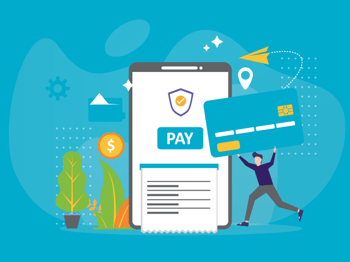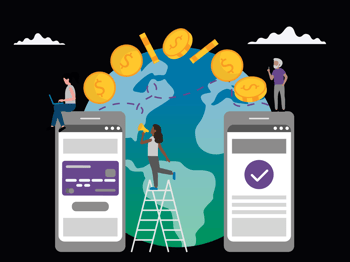Jane uses her FI’s Bill Pay feature to handle her monthly rent payment, but most of her utilities are drafted straight out of her bank account directly through the billers. She hits a food truck for lunch that takes her debit card via Square, and after work she logs in to PayPal to complete a purchase from a local vendor. Why so many payment methods? For what she’s doing, they’re easy.
Easy or not, this a la carte approach to payments seems excessive, but it’s accurate. Consider the following:
- The average number of payment methods used per consumer increased from 2.9 in 2014 to 3.6 in 2015.
- Only 10% of consumers who pay bills are using a single method, while 70% are regularly using 3 or more bill pay methods.
- In the mobile space, FIs’ mobile apps or sites only account for 41% of mobile usage, while billers’ mobile sites accounted for 49%.
In the face of nearly countless options, it seems that FI-based Bill Pay may have reached its saturation point. Making matters worse for FIs are the looming threats of Gmail Bill Pay and Google Wallet—especially considering the nearly half a billion Gmail accounts in existence. If even a modest percentage of those account holders decided to adopt a bill pay service native to their email, FIs will find their share of the $1.2 trillion bill pay business even further fragmented.[1]
While having a grab bag of consumer payment options is reflective of some strengths in the marketplace—a growing economy, for example, and an innovative, entrepreneurial spirit—there is a downside to this approach, as well as some very tangible benefits to uniting payments within a digital banking platform.
For consumers, the biggest concern with a fragmented payments strategy should be security. Using three or four payment methods presents three or four exposure points—many managed by vendors who don’t invest in security as thoroughly as FIs do. And consumers are less likely to keep a close eye on each payments application or account, giving a greater window of opportunity for fraudsters to do some real damage. Also, while each individual method is simple enough and provides a positive user experience, the cumulative effect of juggling multiple apps, logins, passwords, etc., makes for a less than stellar user experience overall. FIs, with the right tools, can do better.
For FIs, the fragmented payments market diminishes their account holder data. FIs are sitting on a goldmine of data, but it’s incomplete—and few FIs are engaging with analytics in actionable ways. Bringing more payments transactions into the FI will paint a more complete picture of what account holders are spending on, what their needs are, and what sort of banking products they might be interested in.
But the underlying issue remains—the competition in the payments field is stiff and FIs need to differentiate and stand out to attract and keep users. In a marketplace filled with arguably too many options, supply and demand no longer drive consumer behavior; what matters is experience—and on the digital/mobile payments playing field, FIs’ user experience is, on average, behind the curve. Core providers often tether FIs to hard-to-update technology and clunky interfaces; mobile apps are too often overfilled, lacking the clean and simple look, feel, and functionality that users have grown accustomed to elsewhere. Consumers and retailers aren’t thinking about innovation when they adopt a new payment method. They just want something easy. Is your experience as simple as it should be?
In recent years, there’s been a lot of buzz around payments—including a fourth, real-time payment method beyond the usual Wire, ACH, and card payments. While it’s possible that this instant payment method could have some unifying effect on the industry, it’s likely to generate a lot of the same criticism that digital banking solutions already hear—like limited mobile access, difficult user experience, security concerns. Going a step further, this impending innovation raises the question—do consumers care? At the end of the day, they simply want their payments settled and they currently have a wide array of options for that already. If anything, this real-time scheme could simply spur more FinTech payments providers onto the playing field, each boasting about their superior, real-time payments.
FIs might do better to focus on experience—and to find ways to communicate the benefits of their experience, their security, and the unity of having a one-stop Platform for all things financial. Digital relationships are crucial in banking and many FIs simply aren’t doing enough to cultivate them.
The bright spot about the real-time scheme is this: that it will make a wealth of data available to travel with payments. To cultivate online and mobile relationships, FIs need that data—they need all the data they can get. With more transactional data in the mix, they’ll be able to leverage analytics to better understand account holder behavior. This will allow them to discover more about account holders’ needs and their expectations, helping FIs serve and connect with them better than the next shiny new payment app ever could.
To learn more about Q2’s approach to payments and how we’re set to lead community-oriented FIs through innovation in this area, download our paper here.
[1] https://www.americanbanker.com/news/gmail-bill-pay-a-bigger-threat-to-banks-than-google-wallet




